Israel is launching a new military operation in Gaza, declaring plans to fully clear the area of Hamas militants and establish "security zones." But the essence of what is happening goes beyond another phase of the conflict. The army is effectively taking control of humanitarian aid, relocating civilians to the coast, and destroying entire neighborhoods—increasingly resembling a reoccupation of the enclave. Meanwhile, the world has less and less influence over the course of events.
The generals had hoped that the operation, launched on April 1, would remain out of the spotlight—at least until Israeli forces had secured key positions. But politicians were quick to seize the initiative. Defense Minister Yoav Gallant publicly announced the start of a new phase—"to crush and clear out the terrorists." According to him, the goal of the operation is to take control of large parts of Gaza and incorporate them into Israel’s "security zones."
Key Events of the Past Weeks
March 18
Ceasefire Broken
Israel launches its first airstrikes on Gaza, effectively ending the ceasefire.
April 1
Start of Operation "Morag Route"
Israeli forces begin a ground offensive. The defense minister announces a "terrorist clearing," and later the prime minister reveals the operation’s name and objective.
April 2
Evacuation Order for Rafah
Residents of the southern Gaza Strip are instructed to leave their homes and move to "humanitarian zones" along the coast.
April 4
Closure of Bakeries
The World Food Programme reports that 25 bakeries shut down due to a lack of flour and fuel.
April 7
Trump’s Statement
After meeting with Netanyahu, Donald Trump says the "war should end," but takes no concrete steps.
April 10–14
Mass Evacuations and Rising Casualties
Israeli forces expand the offensive; tens of thousands flee to the coast. The humanitarian situation deteriorates sharply.
April 15
Water Crisis
The UN reports that Gaza residents have access to just 6 liters of drinking water per day.
April 16
Execution of Medics Revealed
The New York Times publishes video evidence contradicting the IDF’s account of a strike on an ambulance convoy near Rafah.
Protests Against Hamas and Repression
Despite threats, rare protests against the ruling movement break out in Gaza. In response—arrests, torture, and executions.
A few hours later, Prime Minister Benjamin Netanyahu released a video address in which he declared that Israel was "shifting into a new gear." He revealed the name of the operation—"Morag Route"—and its geographic reference, which reportedly irritated the military. Morar is a small Israeli settlement that used to lie between Rafah and Khan Younis during the full occupation of Gaza. Today, the Israeli army is there again.
Map of the "Morag Route" Operation
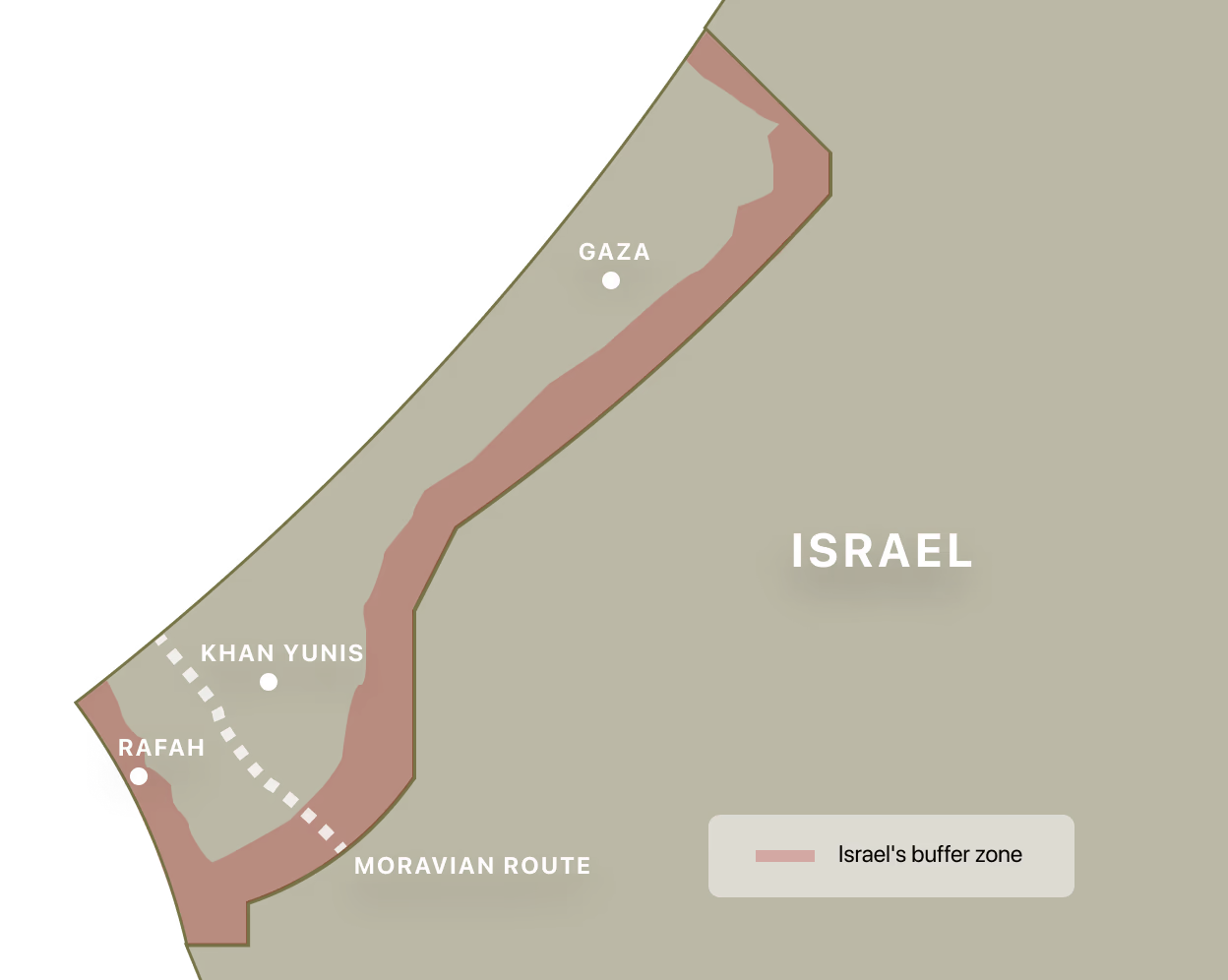
The operation is aimed at dividing the 365 km² Gaza Strip into isolated zones. Israeli forces are destroying entire neighborhoods in an effort to eliminate Hamas, which still controls parts of the territory. Residents of Rafah have been ordered to evacuate to overcrowded "shelter zones" along the coast.
As confirmed by Israeli security officials in a statement to The Economist, the plan includes the complete depopulation of the Rafah area—a territory that makes up about 20% of the entire Strip. Similar actions, though on a smaller scale, are also taking place in northern Gaza.
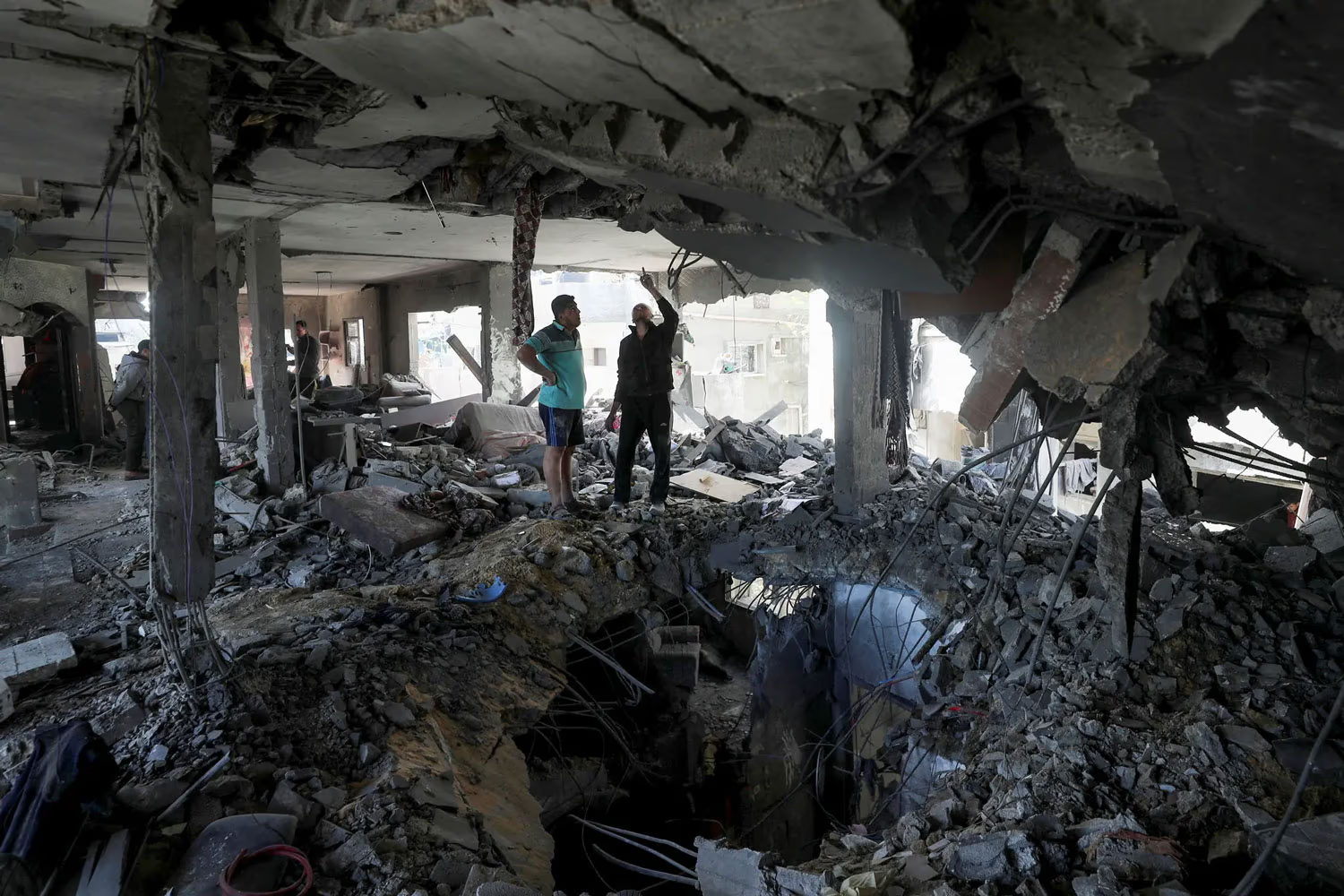
Building destroyed by Israeli airstrike. Jabalia, northern Gaza, April 16, 2025.
All of this is part of a broader strategy: to push more than two million residents from the cities toward the coast. This creates so-called "kill zones," where only militants are expected to remain. In the long term, Israeli authorities hope that Palestinians will "voluntarily" leave the enclave.
Some officers suggest that "Morag Route" could also serve another purpose. A month ago, Israel halted humanitarian deliveries, claiming that Gaza had sufficient food and that distribution was controlled by Hamas. By relocating the population to the coast, Israel may begin delivering aid directly—bypassing the group.
This could mark a turning point in policy. Until recently, the Israeli army had refused to take responsibility for the humanitarian situation in Gaza, preferring to work through international organizations. In private conversations, generals emphasized that reoccupation of the enclave was unacceptable. But under pressure from politicians pushing for control over aid deliveries as a step toward establishing a permanent presence, the military has shifted its approach.
According to new plans, the IDF will begin distributing humanitarian aid directly to civilians concentrated along the coast. The rest of the enclave will effectively be turned into a scorched zone—with the aim of fully eliminating Hamas.
When exactly this phase will begin remains unclear. In the meantime, the humanitarian situation is rapidly deteriorating. The World Food Programme has reported the closure of 25 bakeries that produced pita bread: they have run out of fuel and flour. Families have no means to cook—the price of a kilogram of cooking gas has risen to 250 shekels ($66) from 8–10 before the blockade, and a sack of flour has nearly doubled in price. Sugar, oil, and other basic goods have vanished from store shelves.
A severe water shortage is also being felt. Production at the main desalination plant in the southern part of the enclave has dropped by 85% after electricity was cut. According to the UN, residents of Gaza now have access to no more than six liters of drinking water per day.
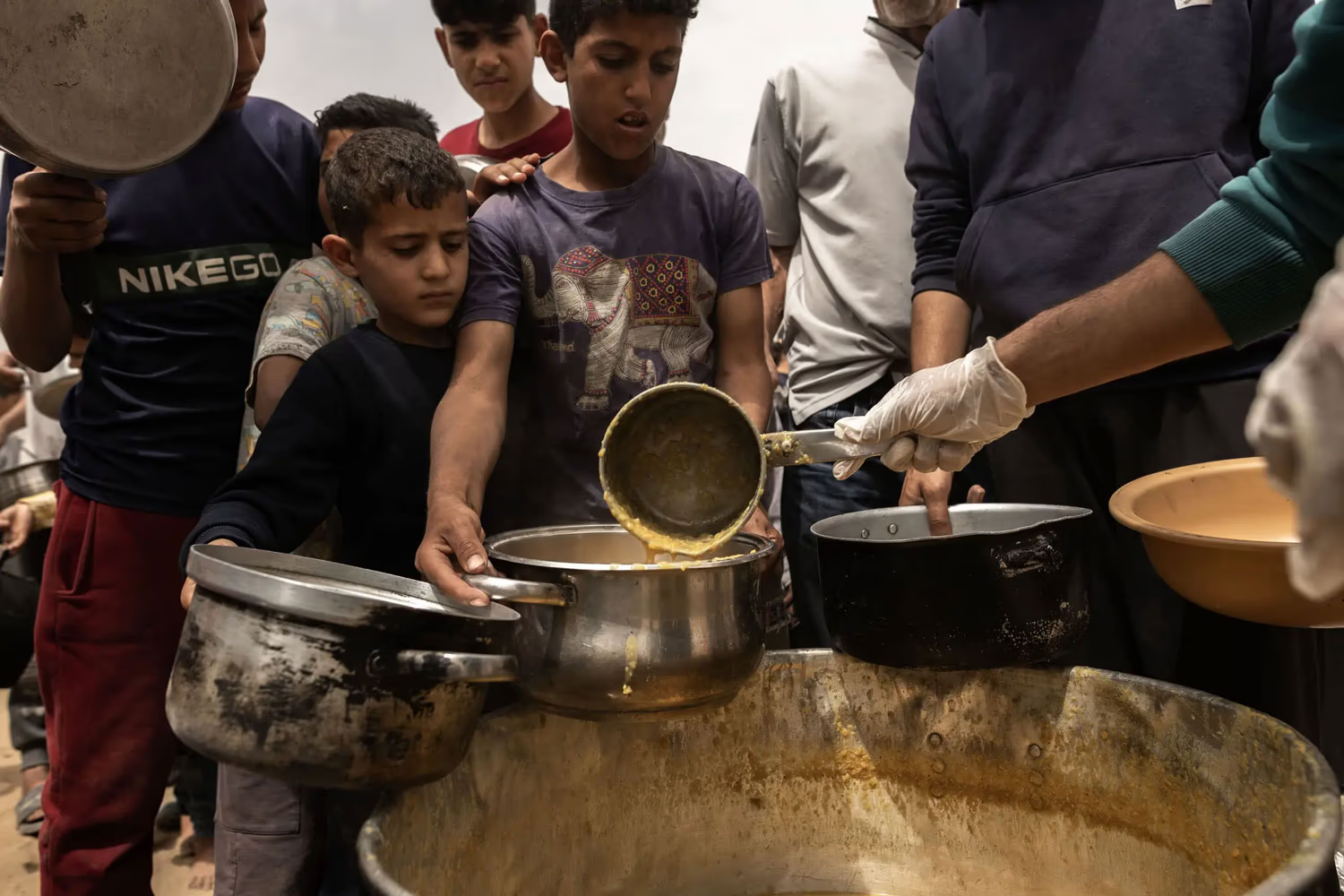
Food distribution in Jabalia.
But it's not only hunger that threatens lives. Last month, Israeli forces shot dead 15 Palestinian medics near Rafah. The IDF claimed the convoy was acting suspiciously—moving without lights or signals. However, video from The New York Times contradicted that version: the ambulances were clearly marked, with sirens and flashing lights. The medics in uniform were gunned down with automatic fire.
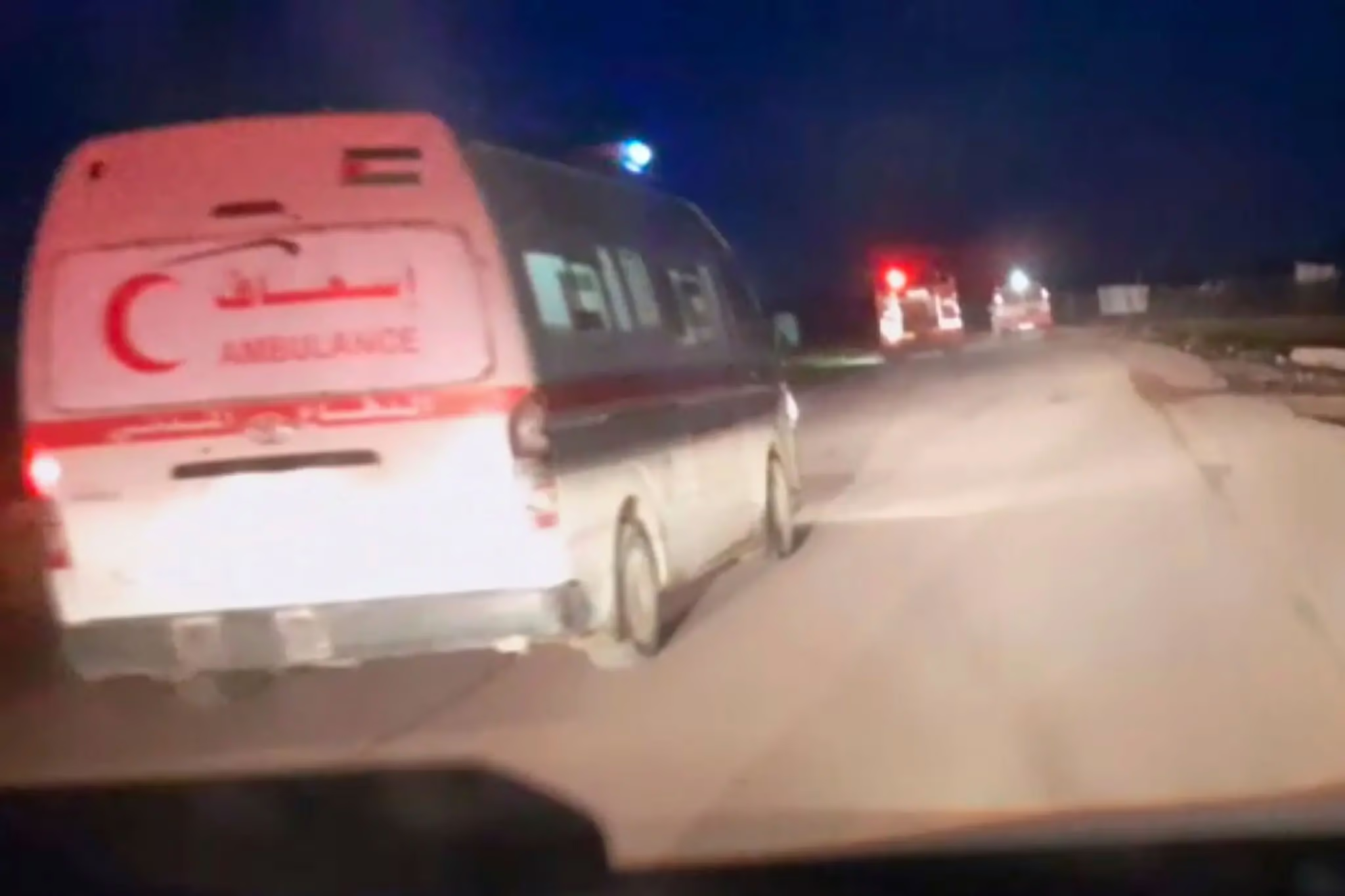
A frame from a video shot on a mobile phone by a paramedic and released by the Palestinian Red Crescent shows the moment before he and other medics were killed by Israeli forces in Gaza on March 23.
The killings triggered rare public protests against Hamas in Gaza—some drawing thousands of people. But the demonstrations were soon met with brutal repression: critics were tortured and executed by the militants.
Israel broke the ceasefire in Gaza first—with airstrikes on March 18, followed by the ground offensive. Since then, more than a thousand people have been killed, according to rights groups. Fearing more protests, Hamas has indicated it is ready for another brief truce—possibly lasting several weeks. During this time, it could exchange a small number of the 59 Israeli hostages (most of whom are presumed dead) for Palestinian prisoners. But even if such a deal is reached, Israel is expected to continue its offensive.
The outlook remains bleak. "There are currently no serious plans being discussed for the day after the war in Gaza," says a diplomat previously involved in negotiations. The only glimmer of hope came from Donald Trump’s remark after his April 7 meeting with Netanyahu: "I’d like to see this war end. I think it will—and maybe not too far off."
It was Trump’s team that pushed Israel into accepting the first ceasefire. But now the president appears focused elsewhere. Without his active involvement, little stands in the way of Gaza’s total destruction.
Might Over Right
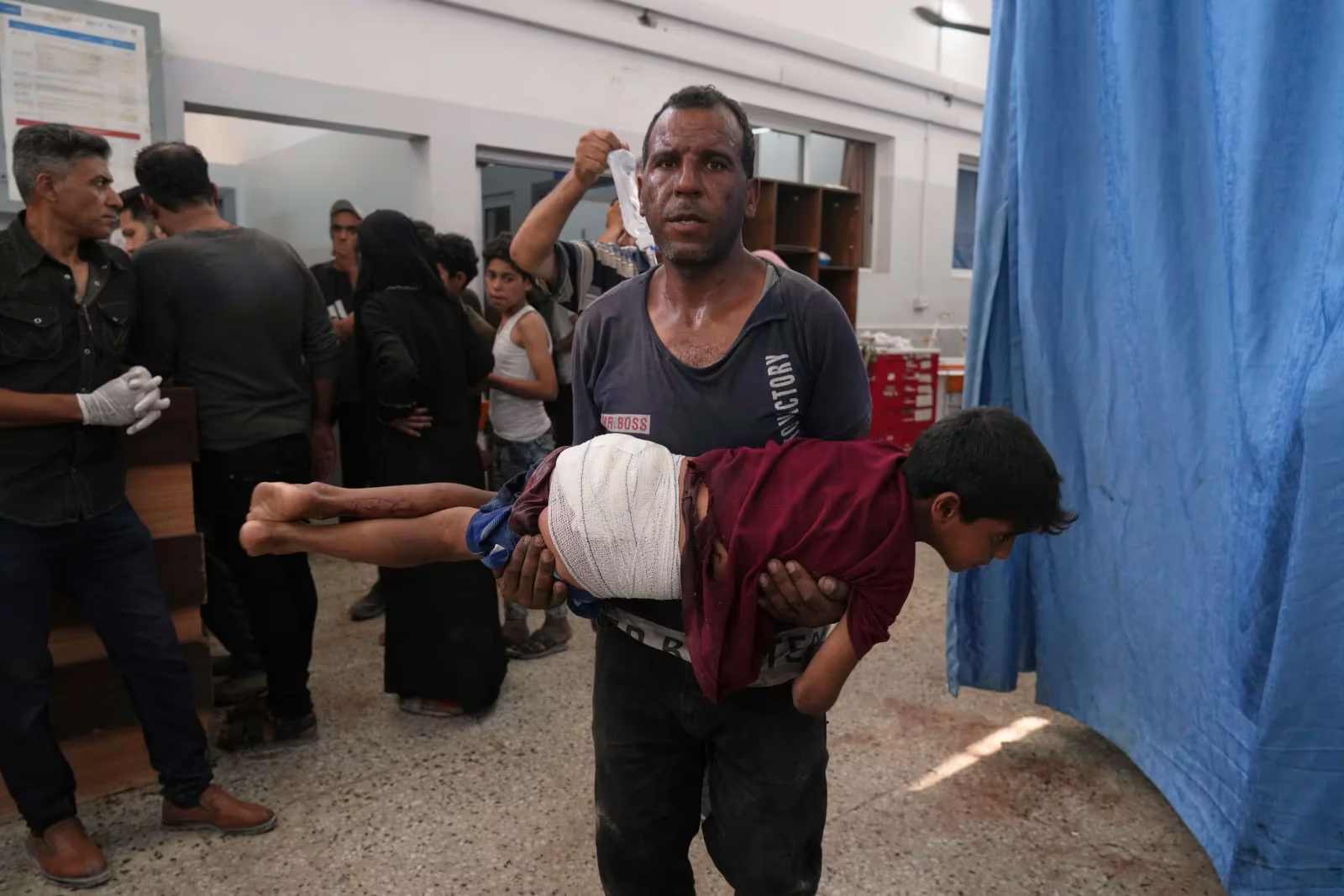
Israel Intensifies Strikes on Gaza
At Least 74 People Were Killed in 24 Hours, Including in Attacks on Aid Distribution Points and an Airstrike on a Café

Israel Launches Airstrike on Jabalia
At Least 48 Dead, Including 22 Children

Israel Keeps Gaza Under Total Blockade, Cutting Two Million People Off From Food, Water, and Medicine
This Is Not a Humanitarian Crisis—It’s a Deliberate Siege

Blockade and Economic Devastation Leave Gaza Without Food
Families Survive on Canned Goods and Aid

